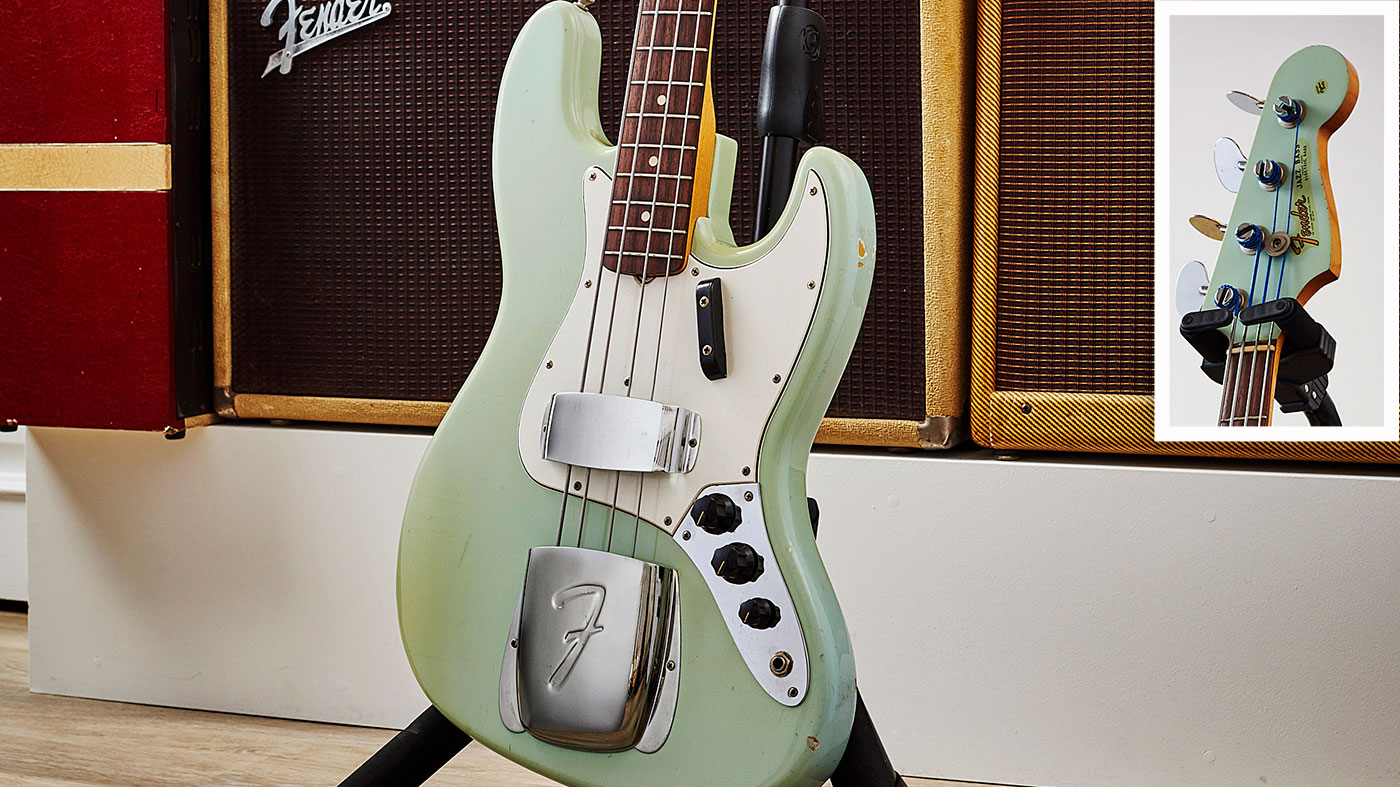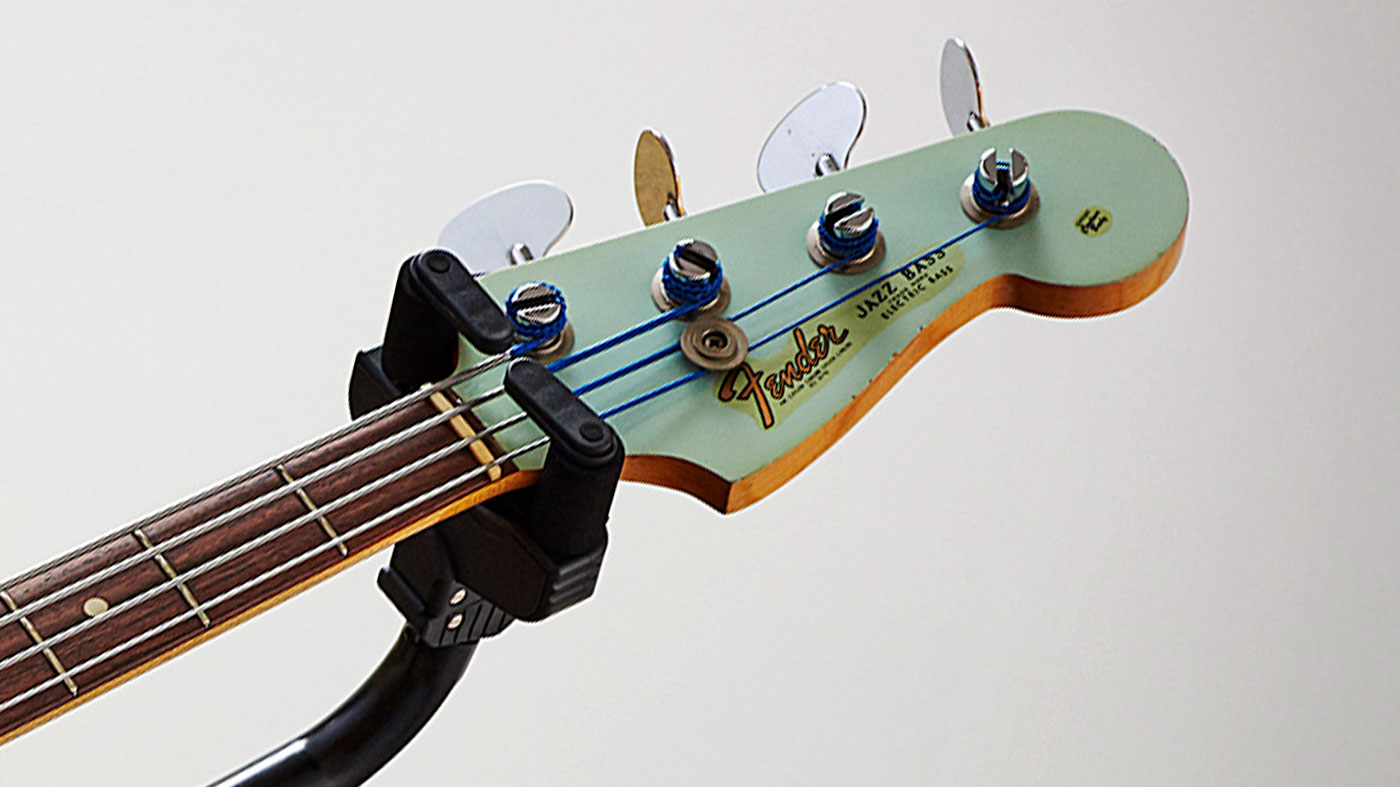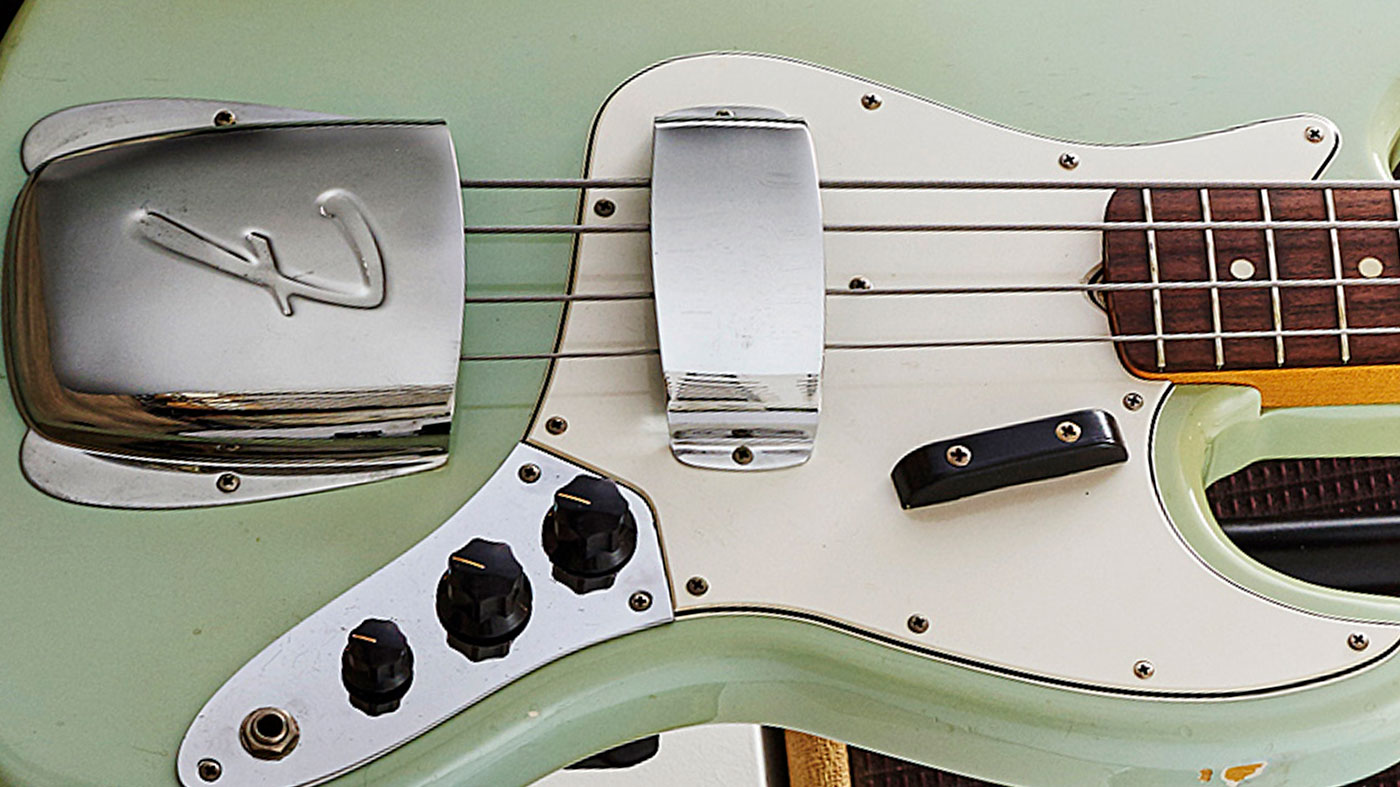Classic gear: Fender Jazz Bass
After the revolution of the P-Bass, the Jazz made the four-string even cooler

Soon after Leo Fender put the first mass-produced solidbody electric guitar, the Esquire, into production in the Spring of 1950, he turned his attention to its low-end equivalent, the Precision Bass.
Appearing the following year in 1951 and often referred to as the P-Bass for short, it was the first bass instrument of its type and offered players a unique way of navigating a horizontal neck using frets - as opposed to an upright/fretless model - with comfort, ease and accuracy of pitch (hence the ‘Precision’ moniker).
Musical styles were rapidly changing, and the creative abandon encouraged by jazz music had installed a sense of freedom with regards to technique. The P-Bass turned out to be a smashing success and became the virtual blueprint for what is still considered to be a staple instrument within the field of contemporary music.
During this intensely imaginative period of the 1950s, Fender went far beyond establishing themselves as a regular musical instrument supplier
The burgeoning electric jazz, blues and rock ’n’ roll movements were all about making fresh sounds, and during this intensely imaginative period of the 1950s, Fender went far beyond establishing themselves as a regular musical instrument supplier by essentially creating demand within a brand-new market based on multiple, often radical, design innovations.
Throughout the decade, their catalogue was further refined and expanded to include several different models of electric solidbody guitars and amplifiers. By 1959 the company had decided it was high time they revisited and progressed their concept of the solidbody electric bass guitar.
Released in 1960 with a standard threetone Sunburst finish, offset body shape and slab rosewood fingerboard, the Jazz Bass was introduced as a follow-up to the widely popular Precision Bass model.
It included a new set of features designed to enhance playability, expand the tonal range and further attract bassists away from traditional upright instruments. With a distinctively narrow nut measuring 1.5 inches and utilising a 34-inch scale length with more compact string spacing than the P-Bass, the new Jazz Bass inspired a certain ease of play that encouraged bass guitarists to perform with greater speed and dexterity, if required, and topped the P-Bass list price by $50 at $279.50.
Get the MusicRadar Newsletter
Want all the hottest music and gear news, reviews, deals, features and more, direct to your inbox? Sign up here.
Throughout the 1960s the popularity of the Jazz Bass snowballed - albeit not necessarily in the field of jazz music
The Jazz Bass came equipped with two single coil pickups, each sporting two polepieces per string for a rounder tone, wired to provide noise-cancelling. Originally, tone and volume for each pickup was controlled via individually assigned concentric pots, or ‘stacked’ knobs. In 1962, however, this control layout was altered to include two single volume knobs for each pickup, along with a slightly smaller master tone knob used to treble bleed both pickups simultaneously. The original Jazz Bass design also included a mute system positioned at the bridge, although this was soon dropped in 1963 with palm-muting techniques having become the preferred approach for a majority of players.
Throughout the 1960s the popularity of the Jazz Bass snowballed - albeit not necessarily in the field of jazz music, despite its moniker, as was the case with the Jazzmaster. It became the instrument of choice for some of the era’s most revered and influential artists, including slap-pop originator and funk icon Larry Graham, Jimi Hendrix’s Noel Redding and The Who’s John Entwistle. Having changed little in terms of basic design, the Fender Jazz Bass has remained in production ever since its arrival nearly 60 years ago.
1965 Sonic Blue Fender Jazz Bass
Serial number
Stamped onto neck plate; L-prefixed five-digit serial number, usually in the range of L60000s-L99000s; later models from 1965 with six-digit serial numbers, usually in the range of 100000-110000s

Headstock
Matching Sonic Blue custom colour nitrocellulose finish; original gold and black ‘transition’ logo (designed by Bob Perine and debuting upon the Jazz Bass’ release in 1960); ‘Jazz Bass Trade Mark Electric Bass’ and ‘Offset Contour Body’ decals
Body
Jazzmaster-style offset double-cutaway alder body in rare Sonic Blue custom colour nitrocellulose finish (faded to green)
Hardware
Chrome control plate (with front-loading jack input), neck plate, front pickup cover, F-logo embossed back pickup/bridge cover and oval ‘no-name’ Kluson tuners; round metal D/G string guide; metal strap buttons (central bottom edge and bass horn); toploading metal bridge with 4x individually adjustable metal bridge saddles

Pickups
2x single coil pickups with eight polepieces each (2x polepieces per string); 2x independent pickup volume pots; one master tone pot
Plastics
Three-layer (white/black/ white) ABS vinyl pickguard; black plastic finger rest/’tug bar’; 2x black plastic volume knobs and one (smaller) black plastic tone knob
Neck
One-piece maple neck with veneer rosewood fretboard; dot fretboard markers; narrow tapered profile with 34-inch scale length and 1.5-inches nut width; nitrocellulose lacquer; truss rod adjustment located at heel
The evolution of the Fender Jazz Bass
- 1960 First released; 2x ‘stacked’ volume/ tone knobs; felt string mutes; slab rosewood fretboard
- 1962 Veneer rosewood fretboard; custom colour finishes available
- 1963 Felt string mutes discontinued
- 1964 Pearloid dot fretboard inlays begin to replace ‘clay’ dots
- 1965 Fingerboard binding introduced
- 1966 Pearloid block inlays replace dots
- 1968 Original gold and black headstock Fender logo replaced by black logo; Kluson tuners replaced with ‘F’ logo type; nitrocellulose finish replaced by polyester
- 1969 Maple fingerboard, black binding and black block fretboard inlays optional. This was standard in 1971
- Mid-70s Original four-bolt neck plate replaced by three-bolt ‘micro-tilt’ design; bullet truss rod; maple fingerboard with pearloid block fretboard inlays and white fretboard binding optional
Rod Brakes is a music journalist with an expertise in guitars. Having spent many years at the coalface as a guitar dealer and tech, Rod's more recent work as a writer covering artists, industry pros and gear includes contributions for leading publications and websites such as Guitarist, Total Guitar, Guitar World, Guitar Player and MusicRadar in addition to specialist music books, blogs and social media. He is also a lifelong musician.
“I don’t think they’re New Order. They don’t sound anything like them”: Peter Hook takes aim at his estranged bandmates
“It’s about delivering the most in-demand mods straight from the factory”: Fender hot-rods itself as the Player II Modified Series rolls out the upgrades – and it got IDLES to demo them












